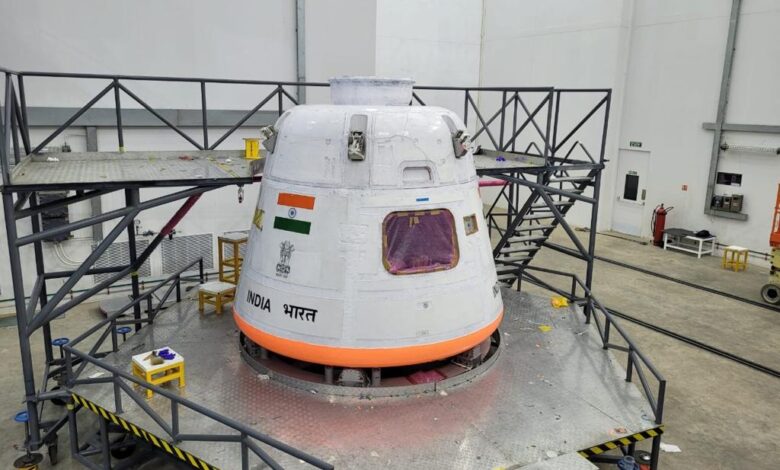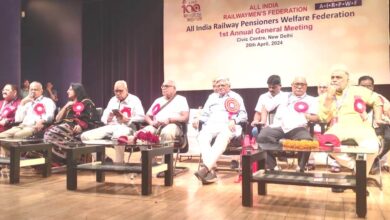PM Modi reviews progress of Gaganyaan mission

New Delhi, October 2023: Prime Minister, Mr. Narendra Modi has chaired a high-level meeting to assess progress of India’s ambitious Gaganyaan Mission and to outline the future of India’s space exploration endeavours.
The Department of Space presented a comprehensive overview of the Gaganyaan Mission, including various technologies developed so far such as human-rated launch vehicles and system qualification. It was noted that around 20 major tests, including uncrewed missions of the Human Rated Launch Vehicle (HLVM) are planned. In the immediate future, the first demonstration flight of the crew escape system test vehicle is scheduled for October 21. The meeting evaluated the mission’s readiness, affirming its launch in 2025.

Building on the success of the Indian space initiatives, including the recent Chandrayan-3 and Aditya L1 Missions, Prime Minister directed that India should now aim for new and ambitious goals, including setting up a ‘Bharatiya Antariksha Station’ (Indian Space Station) by 2035 and sending first Indian to the Moon by 2040.
To realise this Vision, the Department of Space will develop a roadmap for Moon exploration. This will encompass a series of Chandrayaan missions, the development of a Next Generation Launch Vehicle (NGLV), construction of a new launch pad, setting up human-centric Laboratories and associated technologies.
Prime Minister also called upon Indian scientists to work towards interplanetary missions that would include a Venus Orbiter Mission and a Mars Lander. He expressed confidence in India’s capabilities and affirmed the nation’s commitment to scaling new heights in space exploration.
The Gaganyaan project envisages demonstration of human spaceflight capability by launching a crew of three members to an orbit of 400 km for a 3 days mission and bringing them back safely to earth, by landing in Indian sea waters.
The project is being accomplished through an optimal strategy by considering inhouse expertise, experience of Indian industry, intellectual capabilities of Indian academia and research institutions along with cutting edge technologies available with international agencies. The prerequisites for Gaganyaan mission include development of many critical technologies including human rated launch vehicle for carrying crew safely to space, life support system to provide an earth like environment to crew in space, crew emergency escape provision and evolving crew management aspects for training, recovery and rehabilitation of crew.
LVM3 rocket, which is a well proven and reliable heavy lift launcher of ISRO, is identified as the launch vehicle for Gaganyaan mission. It consists of solid stage, liquid stage and cryogenic stage. All systems in the LVM3 launch vehicle are being re-configured to meet human rating requirements.
The vehicle will, among other things, have a crew escape system (CES) powered by a set of quick acting, high burn rate solid motors which will ensure that crew module along with crew is taken to a safe distance in case of any emergency either at launch pad or during ascent phase.
Since human safety is of paramount importance in Gaganyaan mission, various new technologies comprising engineering systems and human centric systems are being developed. Further, an Astronaut Training Facility established in Bengaluru caters to classroom training, physical fitness training, simulator training and flight suit training. The training modules cover micro-gravity familiarisation through parabolic flights, aero-medical training, and recovery & survival training. Periodical flying practice and yoga are included as part of the training.




